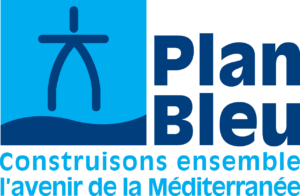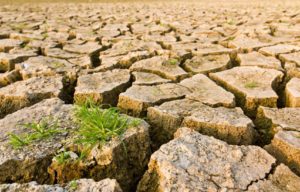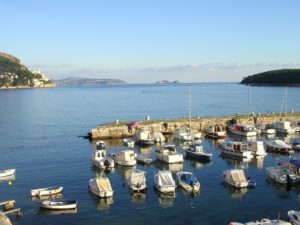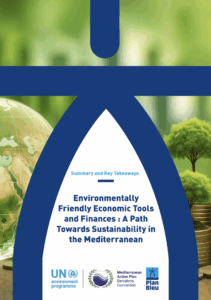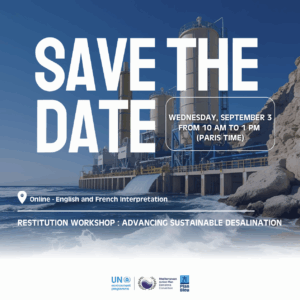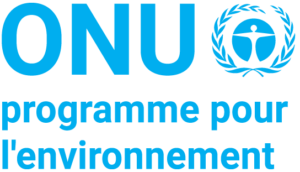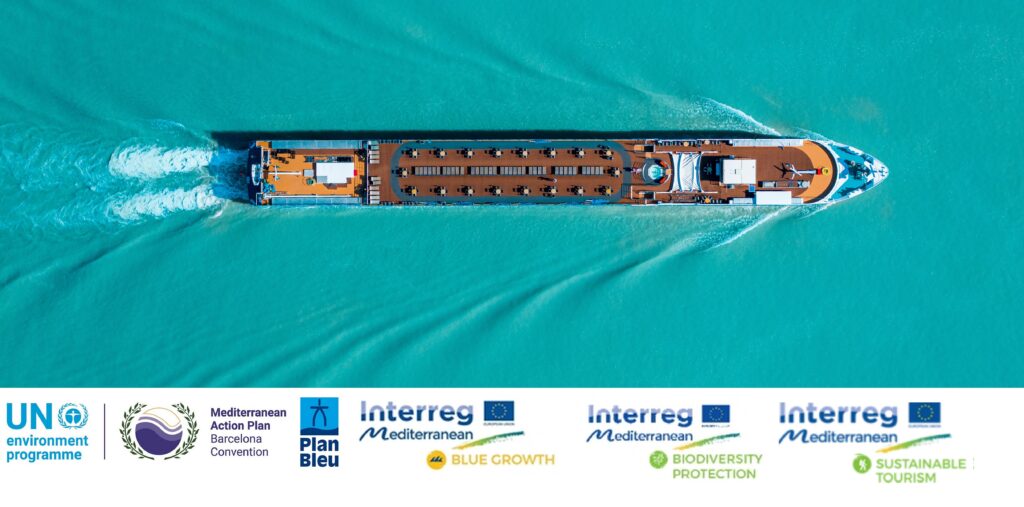Maritime transport represents one of the most important activities of the blue economy for the Mediterranean. The Mediterranean represents 27% of global maritime traffic and hosts 10% of the world’s cruises. The growth of the cruise sector is particularly strong: it is the most important sector of the tourism economy in terms of gross value added and job creation. In recent years, the number of passengers has increased considerably both globally and in the Mediterranean. Cruises in the Mediterranean increased by 8% between 2017 and 2018, for a total of more than 4 million passengers..
Following global trends (annual passenger growth rate of 6.63% from 1990 to 2020), the number of cruise passengers in Mediterranean ports is increasing. More than 31 million cruise passenger movements were recorded in 2019, with an increase of 11.5% compared to 2018. Since 2011, the total number of cruise passenger movements in Mediterranean port has never fallen below 25 million (see Figure 1). The Mediterranean is the first destination area for European cruise passengers, and the second largest market in the world.

Figure 1: Number of cruise movements (millions) in Mediterranean ports that are members of the MedCruise association from 2000 to 2019
(Source: Cruise Activities in MedCruise Ports | STATISTICS REPORT 2019)
The Mediterranean Sea is also a popular destination forsailing, a vast and heterogeneous area comprising both small vessels (<24 m) and large vessels (yachts >24 m and mega-yachts >34 m). This sector is attracted by the seascape, bays, and islands of the Mediterranean, as well as by the high number of facilities for nautical activities, mainly located along the northern coasts of the basin. Most of the pleasure boats that circulate in the Mediterranean are less than 24 meters long, but the number of large yachts is increasing, inline with global trends. A large proportion of the world’s mega-yachts (around 70%) sail in the Mediterranean year-round, with marinas generally close to full occupancy of their capacity, especially inEU-Western Mediterranean countries and in high season.
Although the global COVID-19 crisis has marked a sharp interruption to the growing trends in cruising and boating, the Mediterranean will most likely resume its role in maritime tourism by enabling new positive trends for the future. In addition, it can be expected that the pandemic has increased public awareness of the environmental compatibility and sustainability of the sector, particularly formajor cruises. The recent health crisis as well as environmental and social sustainability issues are shaping the future of the sector, drawing attention to the importance of initiatives to improve the safeguarding of safety, health and the environment, and ultimately the well-being of Mediterranean communities.
A source of employment and dynamism in the region, the recreational boating and cruising sectors also have significant environmental impacts (e.g. emissions of gases and fine particles, impact on marine fauna and flora, noise and light pollution). The challenge is to encourage and support the transition of these two sectors towards environmental and social sustainability, in line with the Sustainable Development Goals (SDGs) of the United Nations 2030 Agenda, the Objectives of the Mediterranean Strategy for Sustainable Development 2016-2025 (MSSD) of the Barcelona Convention, the European Green Deal and, more recently, the EU’s approach to a sustainable blue economy and the European Commission’s Sustainable and Smart Mobility Strategy.
Plan Bleu activities: Development of guidelines for the sustainability of cruises and recreational boating in the Mediterranean
The recommendations of the Interreg MEDInnoBlueGrowth project (2016-2019), of which Plan Bleu was partner, highlighted the lack of common rules in the cruise and boating sector in the Mediterranean region, as well as the need to adopt environmentally sustainable practices. Thus, as part of the 2nd phase of the Blue Growth Community’s Interreg MED project,Plan Bleu set out to produce guidelines for the sustainability of cruises and boating in the Mediterranean region. Capitalizing on the results produced by specific modular projects of the three Interreg Med communities dealing with cruising and yachting (Blue Growth Community, MED Sustainable Tourism Community and Mediterranean Community for Biodiversity Conservation), the guidelines were based on the establishment of a participatory process as well as on the work carried out within the framework of the BlueBoatsMed.
The guidelines should provide Mediterranean decision-makers and stakeholders with an evidence-based sustainability roadmap to exploit the opportunities of both sectors while mitigating their negative effects on marine and coastal ecosystems, associated biodiversity, climate, air quality and local communities.
The guidelines identified five main challenges for the sustainable development of the cruise and recreational boating sectors in the Mediterranean:
- Eliminating air emission of pollutants and greenhouse gases
- Safeguard ecosystems and biodiversity
- Eliminate sources of water pollution, prevent the production of waste and improve its management
- Boosting knowledge and innovation
- Avoiding impacts on local socio-economic systems
Objectives of these guidelines:
A participatory process has been adopted to develop these guidelines and a working group of about a hundred actors has been set up by Plan Bleu, bringing together representatives of the private sector, local, national, and regional authorities, NGOs, researchers, and international organizations working in the sector. Two Interreg Med project communities, of which Plan Bleu is part, are also partners in this initiative: the Blue Growth Community and the Mediterranean Community for the Protection of Biodiversity. The roadmap development process is co-financed by the Mediterranean Trust Fund, the European Regional Development Fund and the French Development Agency.
Stakeholders were consulted in three phases: April 2021:
- a first survey developed a common vision of the sustainability of the cruise and recreational boating sectors and identified sustainability goals. Stakeholders were also asked to assign each objectivea score ofrelevance and feasibility for each sector.
- May 2021: a second survey gathered stakeholder input on good practices in terms of sustainability in each of the cruise, ports, boating and marina sectors.
- Finally, three online workshops were organised to present the draft guidelines, discuss the results of the surveys and gather input from stakeholders to the global document:
–The first workshopon 23 November 2020 was an opportunity for the various partners to address the main issues foreshadowing the development of the guidelines, including definitions of sustainability in the cruise and port sectors.
On 25 May 2021, a workshop was organized specifically dedicated to the cruise and port sectorsin order to specifically address the challenges related to these two sectors and to identify good practices.
– On June 9, 2021, the third workshop was dedicated to the recreational boating and marina sectors, always with a view to agreeing on the issues and identifying good practices.
The final document (English and French versions) is available here.
